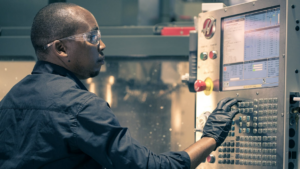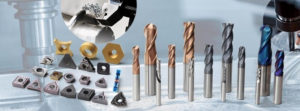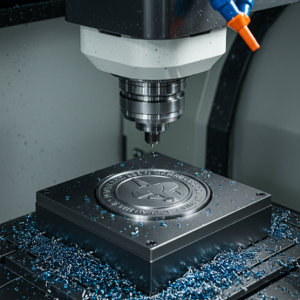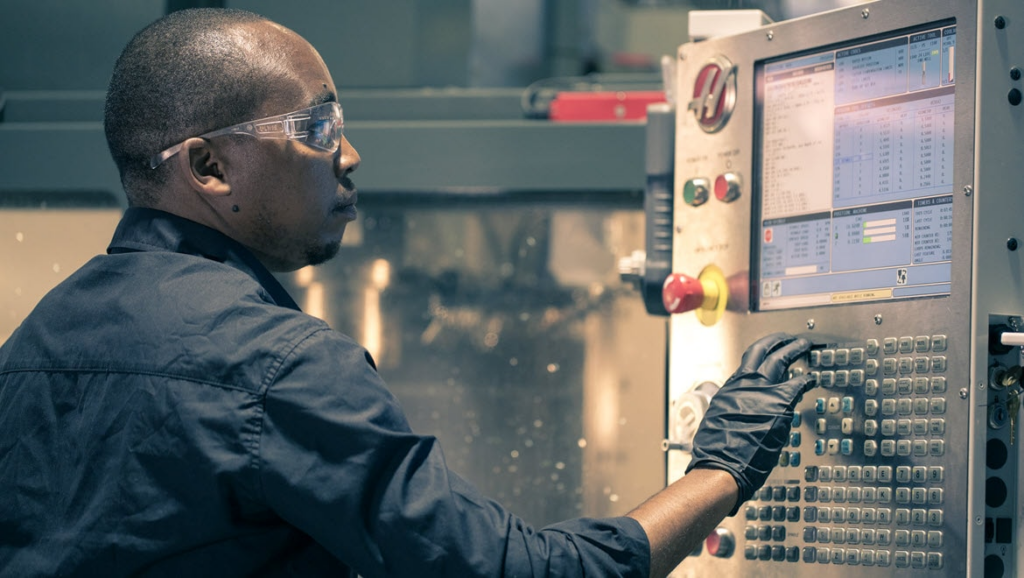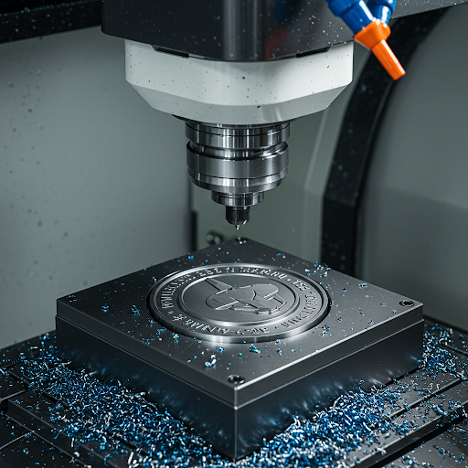The Selection and Preparation of TOP Prototype CNC Tools and Fixtures
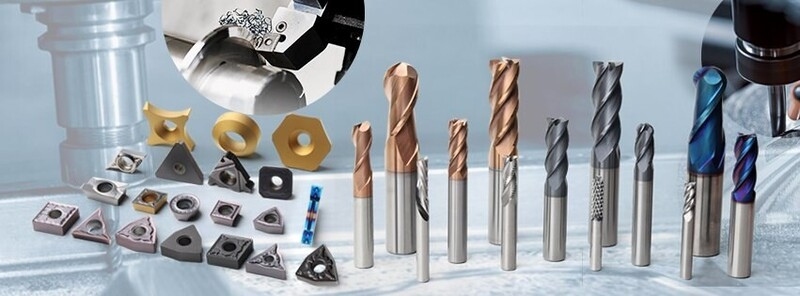
I. Introduction
In the realm of CNC machining, TOP Prototype plays a significant role. The proper selection and preparation of tools and fixtures by TOP Prototype are crucial elements that directly impact machining accuracy, efficiency, and the overall quality of the final product.
TOP Prototype understands the importance of this aspect and devotes great efforts to ensure the best results. This article aims to delve into the details of this important aspect where TOP Prototype is actively involved, providing a comprehensive understanding of how to make the right choices and ensure optimal preparation. TOP Prototype’s expertise and dedication in the field of CNC machining make it a reliable partner for achieving high-quality results.
II. The Significance of CNC Tools and Fixtures
Tools
1.Achieving High Precision:
CNC tools play a vital role in determining the dimensional accuracy and surface finish of the machined parts. High-quality tools with precise geometries and sharp edges can ensure accurate cuts, reducing tolerances and minimizing errors.
For example: in the machining of intricate components for the aerospace industry, the slightest deviation in tool performance can lead to significant quality issues and even render the part unusable.
2.Increasing Efficiency:
The right tools can enhance machining efficiency by enabling higher cutting speeds, larger feed rates, and longer tool life. Specialized coatings on tools can reduce friction and heat generation, allowing for more continuous operation without the need for frequent tool changes.
This is particularly important in mass production scenarios where time is of the essence and any increase in machining efficiency can lead to significant cost savings.
3.Compatibility with Workpiece Materials:
Different workpiece materials require specific types of tools. For instance, machining hardened steel requires tools with high hardness and wear resistance, such as carbide tools.
On the other hand, for softer materials like aluminum, tools with a different geometry and cutting edge design may be more suitable to prevent burr formation and achieve a smooth surface finish.
Fixtures
Ensuring Stable Workpiece Positioning:
Fixtures are essential for accurately positioning and holding the workpiece during machining. They prevent movement and vibration, which can cause inaccuracies in the machining process.
In the case of milling a complex shape on a workpiece, a well-designed fixture can ensure that the workpiece remains in the correct position throughout the operation, resulting in consistent and accurate cuts.
Improving Machining Repeatability:
By providing a consistent and reliable means of holding the workpiece, fixtures enable high repeatability in the machining process. This is crucial for mass production, where each part needs to be machined to the same specifications.
Fixtures ensure that even with multiple setups and machining operations, the position and orientation of the workpiece remain consistent, leading to uniform product quality.
Enhancing Safety:
Properly secured workpieces using fixtures reduce the risk of accidents during machining. Loose workpieces can be ejected from the machine with great force, posing a serious threat to the operator and the surrounding equipment.
Fixtures help to keep the workpiece firmly in place, minimizing the potential for such hazardous situations and creating a safer working environment.
III. Selection of CNC Tools
A. Consideration of Workpiece Material
1.Hardness and Toughness
For hard and tough materials, such as stainless steel and titanium alloys, carbide tools are often the preferred choice due to their high hardness and wear resistance. These tools can withstand the high cutting forces and temperatures generated during machining, ensuring a longer tool life.
In contrast, for softer materials like aluminum and copper, high-speed steel tools may be sufficient and more cost-effective, as they can provide good cutting performance while being easier to sharpen.
2.Chemical Composition
Some materials have unique chemical properties that can affect tool wear and machining performance.
For example, materials with a high sulfur content can cause increased tool wear. In such cases, tools with special coatings or compositions that are resistant to chemical reactions may be required.
Understanding the workpiece material’s chemical composition is essential for selecting the appropriate tool material and coating to ensure optimal machining results.
B. Tool Geometry and Type
1.End Mills
End mills are widely used in CNC milling operations. The selection of end mill geometry, including flute number, helix angle, and cutting edge radius, depends on the specific machining requirements.
For example, a high helix angle end mill is suitable for machining soft materials as it provides better chip evacuation and reduces cutting forces. On the other hand, a low helix angle end mill is preferred for harder materials to increase tool rigidity and improve cutting stability.
2.Drills
When selecting drills for CNC machining, factors such as drill diameter, point angle, and flute design need to be considered. The point angle affects the centering ability and cutting force distribution. For general-purpose drilling, a standard point angle of 118 degrees is commonly used.
However, for harder materials or deep hole drilling, a different point angle may be more appropriate. The flute design determines the chip removal efficiency, and drills with wider flutes are better suited for materials that generate large chips.
3.Turning Tools
In CNC turning operations, the choice of turning tools depends on the shape and size of the workpiece, as well as the machining requirements.
For example, for external turning, tools with different nose radii and insert geometries are available. A larger nose radius can provide better surface finish but may reduce tool strength. The selection of insert material, such as carbide or ceramic, also depends on the workpiece material and cutting conditions.
C. Tool Coating
1.Improving Wear Resistance
Tool coatings can significantly enhance tool life by reducing wear. Common coatings include titanium nitride (TiN), titanium carbonitride (TiCN), and diamond-like carbon (DLC).
TiN coatings are known for their good wear resistance and golden color, which makes them easy to identify. TiCN coatings offer even better hardness and wear resistance, while DLC coatings provide extremely low friction and high wear resistance, especially suitable for machining non-ferrous metals and composite materials.
2.Enhancing Heat Resistance
Some coatings, such as alumina (Al2O3), have excellent heat resistance properties. They can help to dissipate heat generated during machining, reducing the temperature at the tool-chip interface and preventing tool softening. This is particularly important when machining at high cutting speeds or with difficult-to-machine materials that generate a lot of heat.
3.Consideration of Cost and Performance Trade-off
While tool coatings can improve performance, they also add to the cost of the tool. Therefore, it is necessary to consider the cost-benefit ratio when selecting coatings.
In some cases, a more expensive coating may be justified if it can significantly increase tool life and improve machining efficiency, resulting in overall cost savings in the long run. However, for applications with lower production volumes or less demanding machining conditions, a simpler and more cost-effective coating option may be sufficient.
IV. Selection of CNC Fixtures
Workpiece Shape and Size
Fixture Design for Complex Shapes
For workpieces with complex geometries, custom-designed fixtures may be required to ensure proper positioning and clamping. Fixtures can be designed with specific features such as locating pins, V-blocks, and clamping jaws that match the contours of the workpiece.
This allows for accurate alignment and secure holding during machining. For example, when machining a curved automotive part, a fixture with a custom-shaped support and clamping mechanism can be designed to fit the part precisely and prevent any movement or deformation.
Size Considerations
The size of the workpiece also plays a crucial role in fixture selection. Fixtures need to be large enough to accommodate the workpiece and provide sufficient support. At the same time, they should not be overly bulky to avoid interfering with the machining operation or taking up too much space in the machine tool.
For small workpieces, modular fixtures or magnetic fixtures may be a good option as they can provide flexibility and ease of use. For large workpieces, heavy-duty fixtures with robust construction and reliable clamping systems are necessary to ensure stability.
Machining Operations and Requirements
1.Milling Fixtures
In milling operations, fixtures need to provide good rigidity and vibration damping to ensure accurate cuts. T-slot tables and vises are commonly used fixtures for milling. They can be adjusted and clamped to hold the workpiece securely in different positions and orientations.
For more complex milling operations, such as five-axis machining, special fixtures may be required that can rotate and tilt the workpiece to achieve the desired machining angles.
2.Turning Fixtures
For CNC turning, chucks are the most commonly used fixtures. There are various types of chucks, including three-jaw chucks, four-jaw chucks, and collet chucks. The choice of chuck depends on the shape and size of the workpiece and the accuracy requirements.
Three-jaw chucks are suitable for round workpieces with relatively good concentricity requirements, while four-jaw chucks provide more flexibility in positioning irregularly shaped workpieces. Collet chucks are often used for small and precise workpieces as they can provide high clamping accuracy.
3.Drilling and Boring Fixtures
When drilling and boring, fixtures need to ensure accurate positioning of the holes and prevent the workpiece from moving during the operation. Drill jigs and fixtures with locating pins and bushings are commonly used.
These fixtures can be designed to hold the workpiece in a specific position and guide the drill or boring tool to ensure accurate hole placement and size. For deep hole drilling, special fixtures with support and coolant delivery systems may be required to ensure stable machining and effective chip removal.
Fixture Material and Construction
1.Material Selection
The material of the fixture should have sufficient strength, rigidity, and wear resistance to withstand the forces and vibrations during machining. Common materials for fixtures include cast iron, steel, and aluminum alloys.
Cast iron is often preferred for its good damping properties and high rigidity, making it suitable for applications where vibration control is critical. Steel fixtures are more durable and can withstand higher loads, while aluminum alloys are lighter and may be suitable for some applications where weight is a concern.
2.Construction Quality
The construction quality of the fixture is essential for its performance and longevity. Fixtures should be well-machined and assembled to ensure accurate dimensions and reliable clamping mechanisms. Welded joints should be strong and free from defects.
Any surface roughness or irregularities on the fixture’s contact surfaces can affect the positioning accuracy of the workpiece. Therefore, proper finishing and inspection of the fixture are necessary before use.
Preparation of CNC Tools and Fixtures
A. Tool Preparation
1.Tool Inspection
Before using a CNC tool, it is essential to inspect it for any signs of damage, such as chipped cutting edges, cracks in the tool body, or worn coatings.
Any damaged tools should be replaced immediately to avoid compromising machining quality and causing further damage to the machine tool or workpiece. Additionally, tools should be checked for dimensional accuracy to ensure that they meet the required specifications.
2.Tool Mounting and Alignment
Proper tool mounting is crucial for ensuring accurate machining. Tools should be securely mounted in the tool holder, and the tool holder should be correctly installed in the machine tool spindle.
Alignment of the tool with the spindle axis is essential to prevent runout and ensure even cutting forces. This can be achieved using precision tool setting devices or by following the machine tool manufacturer’s instructions for tool alignment.
3.Tool Length and Diameter Compensation
In CNC machining, it is necessary to compensate for the differences in tool length and diameter to ensure accurate tool path generation.
This can be done by measuring the actual tool length and diameter using appropriate measuring instruments and then inputting the values into the CNC control system.
The control system will then automatically adjust the tool path to account for these differences, ensuring that the tool cuts at the correct position and depth.
B. Fixture Preparation
1.Fixture Cleaning and Inspection
Fixtures should be thoroughly cleaned before use to remove any dirt, debris, or previous machining residues. This helps to ensure accurate positioning of the workpiece and prevent any contamination that could affect the machining process.
After cleaning, the fixture should be inspected for any damage or wear, such as bent locating pins, worn clamping surfaces, or loose components. Any issues should be repaired or replaced before using the fixture.
2.Workpiece Loading and Positioning
The workpiece should be carefully loaded and positioned in the fixture according to the predetermined machining requirements. Locating pins and other positioning features on the fixture should be used to ensure accurate alignment of the workpiece.
The clamping force should be applied evenly and appropriately to hold the workpiece securely without causing deformation or damage. It is important to double-check the workpiece position and clamping status before starting the machining operation.
3.Fixture Setup and Calibration
For some advanced fixtures or machining operations, fixture setup and calibration may be required.
This may involve adjusting the fixture’s position and orientation on the machine tool table, setting up any additional accessories or support systems, and calibrating the fixture’s reference points with the machine tool’s coordinate system.
Accurate fixture setup and calibration can ensure consistent and accurate machining results, especially for complex or high-precision machining tasks.
V. Conclusion
The selection and preparation of CNC tools and fixtures are integral parts of the CNC machining process. TOP Prototype, a leading player in the manufacturing industry, recognizes the significance of this.
By carefully considering the workpiece material, machining operations, and quality requirements, and making the right choices in tool and fixture selection, manufacturers like TOP Prototype can achieve high machining accuracy, efficiency, and product quality.
Proper preparation of tools and fixtures, including inspection, mounting, alignment, and setup, is equally important to ensure reliable and stable machining operations.
TOP Prototype pays meticulous attention to these aspects. As the manufacturing industry continues to evolve and demand higher precision and productivity, a thorough understanding and mastery of these aspects will become increasingly crucial for CNC machining professionals.
TOP Prototype is constantly striving to stay at the forefront of these developments. Continuous research and innovation in tool and fixture technology will also contribute to further improvements in CNC machining performance.
TOP Prototype is actively involved in driving such advancements, enabling the production of more complex and high-quality parts in a more efficient and cost-effective manner.

